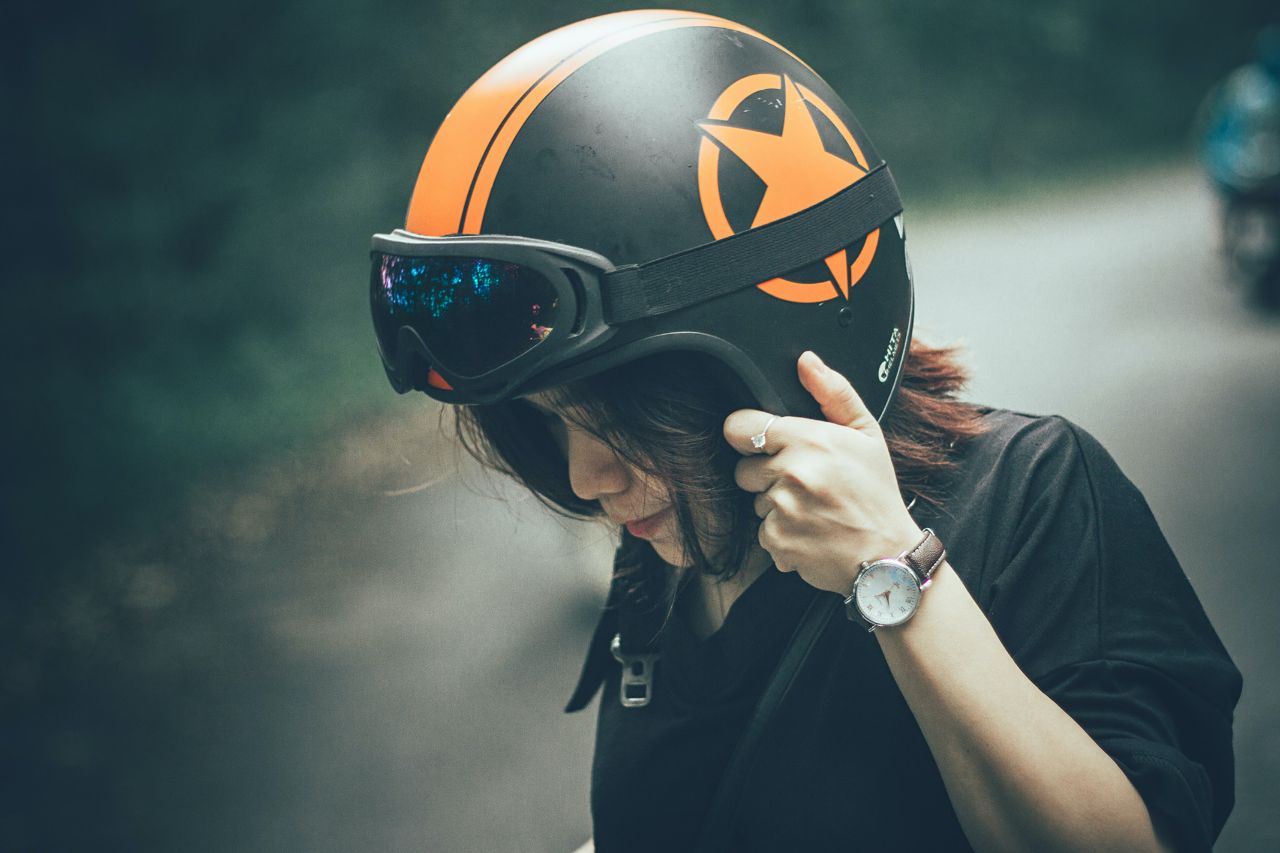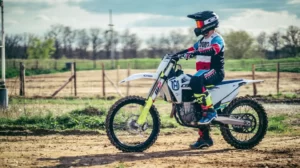This guide will give you some helpful general guidelines for choosing a motorcycle helmet that fits properly so you can receive full protection.
Finding your size and preferred paint job are only two factors to consider when selecting a helmet. In order to protect your head in the event of an impact, you must purchase a helmet that will actually do so.
The impact-absorbing liner is made to handle the forces that are applied to your helmeted head during an impact. However, if there is too much space between the helmet and your head, you are essentially setting yourself up to be struck by your own safety equipment.
Here are the steps to measure a motorcycle helmet:
- Choose a Helmet Style
- Know Your Head Shape
- Measuring Your Head
- Try the Helmet On
- Check for Proper Fit
- Wear the Helmet for About Half An Hour
We’ve put together this beginner’s guide to help you find the ideal fitting helmet.
You Might Also Like: 9 Best Bluetooth Motorcycle Helmets In 2022
Choose a Helmet Style
Never before have there been so many helmet options for motorcycle riders. It can be difficult to choose the best option despite how wonderful having so many options is. Speaking generally, there are five basic types of helmets that you should be familiar with before making your choice.
First up is the least limiting and least protective type of helmet—the open-face. Due to the fact that the rider’s chin or face is not protected by the helmet’s shell, open-face helmets have a massive airflow.
An open-face helmet could be a “half” helmet, which just covers the top of your skull, or a “three-quarter” helmet, which covers everything except the rider’s face. Open-face helmets typically cost less than other types of helmets, but they also lack some features.
These helmets are typically worn by riders of cruisers, retros, and classic motorcycles.
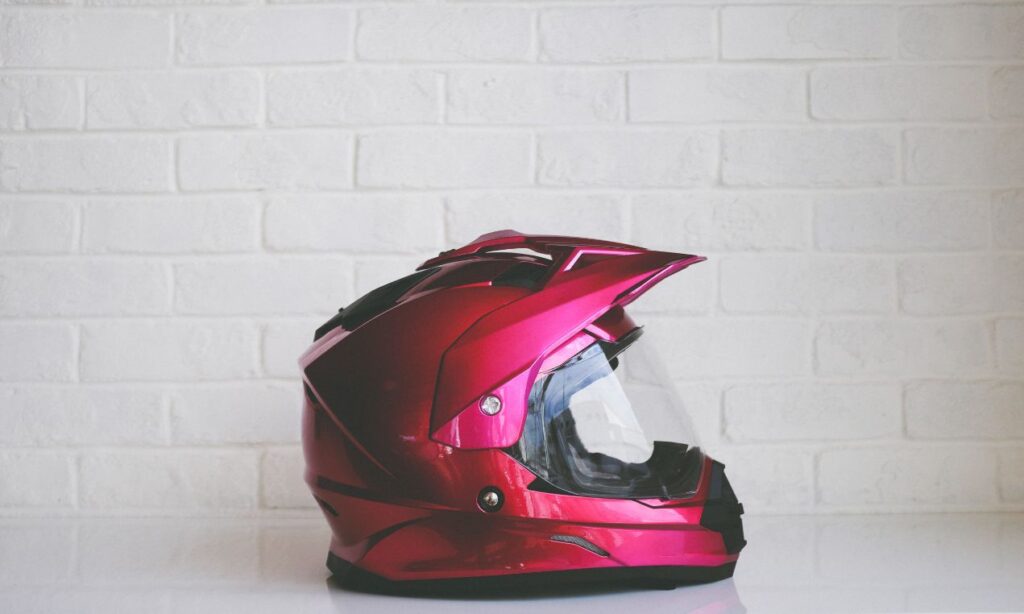
The rider’s head is completely enclosed by the full-face helmet, on the other hand. The rider’s nose and eyes are shielded by a face shield, and the bottom of his or her face is covered by the chin-bar, an extension of the shell.
Full-face helmets are the least ventilated but the most impact and weather-resistant. They are also the most silent helmets on the market. If you want to wear your helmet on the track, only a full-face helmet will do. Every type of street bike is frequently accompanied by a full-face helmet. You Might Also Like: Do Motorcycle Helmets Expire? When to Replace It?
Know Your Head Shape
Although human heads have an infinite variety of shapes and sizes, most of us fall into these two categories:
- very narrow, ‘long oval’ head shapes
- very wide ’round’ earth head shapes
These two head shapes may coexist in some of us. These shapes can be combined in an infinite number of different ways. Fortunately, many motorcycle helmets are manufactured with internal shapes that roughly match these “oval” or “round” shaped head categories.
Below are an illustration of exaggerated human head shapes that is viewed from the front or back of the head
- Oval – sometimes known as “long oval”, the most common head shape
- Round – the round-shaped head is wider in the middle, approximately near the temples
- Egg – wider at the top and narrower at the bottom
Measuring Your Head
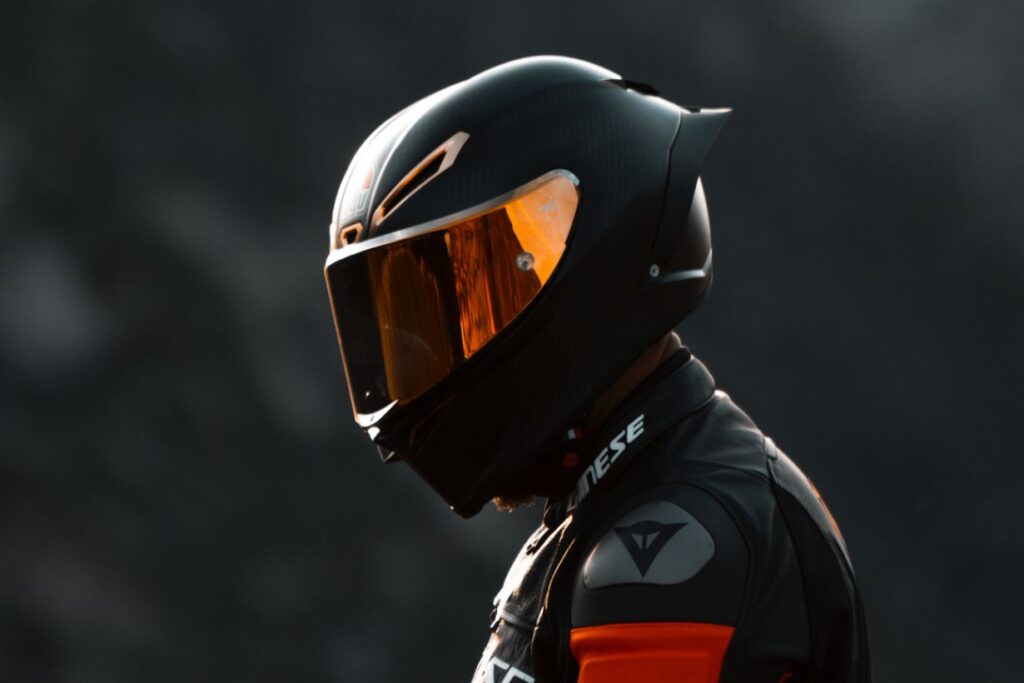
To fit your helmet, you must now obtain precise measurements. For measuring your head for a helmet, a tailor’s tape is the best option.
- The area of your head that is the thickest should be taped off. Most people’s ears will be directly above this, about half an inch above their eyebrows.
- Take a head circumference measurement. Someone else reading the tape will make it simpler and more accurate.
- To be safe, retake the measurement. (“Measure twice, cut once,” as carpenters say.)
- Determine your size by locating a helmet sizing chart for a brand of helmets that interests you.
This is where things start to get a little complicated. Motorcycle helmet sizes differ between brands and types, and each brand has its own sizing chart. Use only the manufacturer’s size chart if you plan to purchase the helmet from them.
Before you start looking at the models you want if you want to look at helmets from a different brand, be sure to review their sizing chart.
Try the Helmet On
You are aware of your measurements and head shape, as well as the style of helmet you’d like. This should limit your options to a selection of practical helmets. Time to order!
As soon as the helmet arrives, put it on, keeping in mind that you might need to grab the straps and spread them apart in order to get the helmet over your head. Helmets aren’t made to be cozy when your head is going through the padding.
Perhaps you should also adjust your ears. Like adjusting your sock after putting on shoes, that is completely normal. With the helmet on, the fit should be prioritized.
Check for Proper Fit
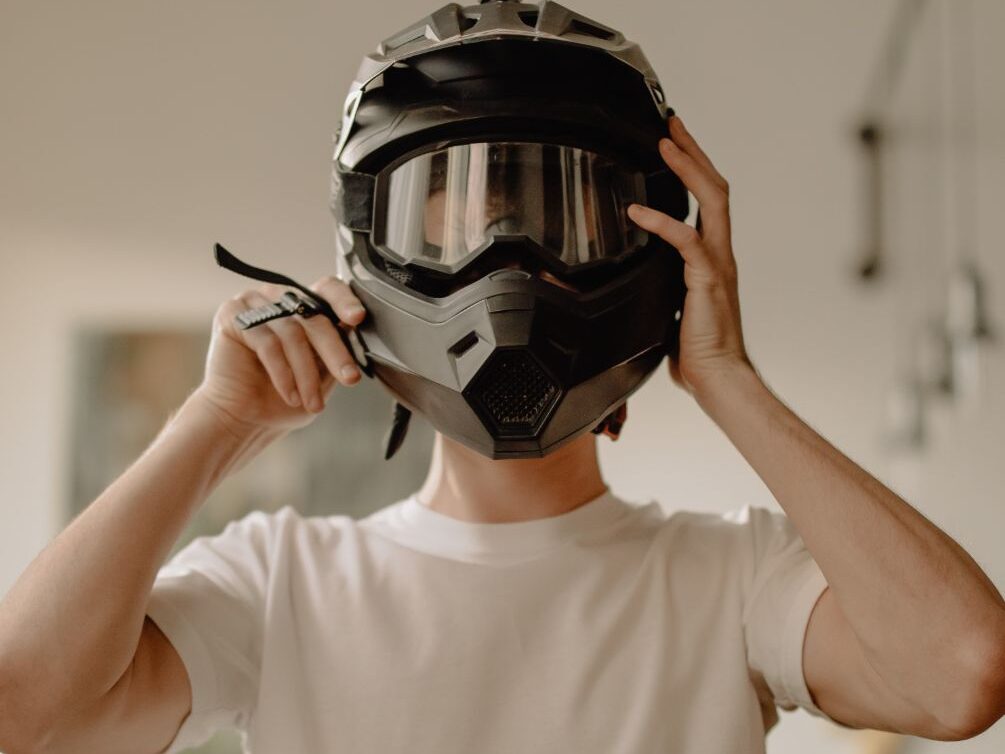
How should it feel when wearing the helmet? Try a different helmet if you experience any significant discomfort. After taking the above actions, if your ordered helmet is unwearable, you might want to double-check your size and shape estimations.
If you took precise measurements, looked at the size chart, and carefully watched the product description and video, you shouldn’t be that far off the mark.
The cushions against your cheeks should feel comfortable if the helmet fits properly. They’ll be pushed up a little, like “chipmunk cheeks.” (The effect will not be produced by open-face helmets because they lack cheek pads.)
The chin bar should then be moved. Not the helmet, but your cheeks should move. Reduce the size by at least one if it is sliding. Remember that after the first 15 to 20 hours of riding, most helmet liners break-in by 15% to 20% if the helmet is a little on the snug side.
Wear the Helmet for About Half An Hour
Insist on wearing the helmet for 15 to 30 minutes. Simply relax and perhaps turn on your preferred TV program. What you’re looking for are pressure points. Tightness is acceptable, but that helmet is not for you if you feel like you have to remove it to relieve the pain.
The forehead and the area above the temples are where discomfort is most frequently felt. Try something else if you have a large red line across your forehead after taking off the helmet.
The oval shape of that helmet is not long enough. The helmet isn’t round enough for you if you can feel it pressing against your temples. Remember that you should not ride your bike during this 30-minute period.
How to Tell If a Helmet Fits?
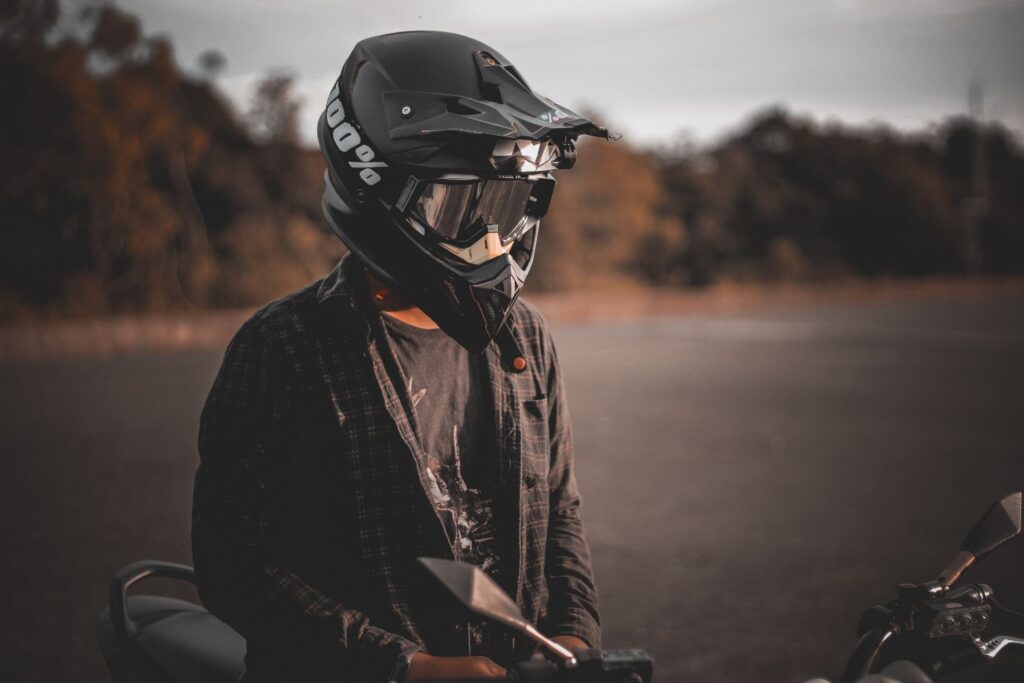
Once the helmet is on your head, you should run a few tests to determine whether the fit is satisfactory. Start by making the widest possible head movements back and forth. The helmet shouldn’t sway or move apart from your head. If it does, you might need to adjust the chin strap or the helmet might be too big.
Your head should be snugly protected by a brand-new helmet. Slide your finger between your head and the padding of the helmet to check this. Getting your finger inside the helmet ought to be a little challenging.
It’s acceptable if a helmet doesn’t initially feel completely secure when worn. As you ride with it, your head will become accustomed to it. (Consider adjusting the cheek pads as well for a more comfortable fit.)
However, the helmet shouldn’t have “hot spots” where it puts excessive pressure on your skull. Verify that you are trying on the appropriate helmet shape if you experience extreme pressure at specific points.
Think about where you’ll need to put your Bluetooth motorcycle helmet speakers if you have a Cardo Packtalk Bold motorcycle communication system.
The way the helmet alters your field of vision is something else to consider. You should be able to see out of the eye-port of the helmet, which should be placed just above your eyebrows.
Motorcycle Helmet Top Tips
You can do a lot of other things to keep yourself safe while wearing a helmet in addition to choosing the appropriate size. Here are some top tips:
- Never wrap or place anything on your hair inside a helmet because this will alter how the helmet fits around your head.
- Never try to add more padding to a helmet to alter its fit or position.
- It’s crucial to check your helmet using the instructions in this video on a regular basis because a helmet’s padding can wear out or change shape over time. The helmet will need to be replaced if it no longer fits.
Conclusion: Choose the Best Comfortable Motorcycle Helmet
When it comes to motorcycle safety, your helmet is your best friend, so you should choose wisely and maintain it. Let’s review the steps of how to measure for a motorcycle helmet:
It’s time to choose your new helmet now that you understand how to determine the correct size. We have listed the top motorcycle helmets below.
FAQs
What Size Helmet Do I Need If My Head is 22 Inches?
A head circumference of 22 inches divided by 3.14 equals 7.00-or a size 7 hat.
How Do I Know My Helmet Size?
To measure your head size, wrap a tape measure horizontally around your forehead. Select the helmet that is the closest fit to that size. Your head should comfortably cradle the helmet. It is too big if it moves while being worn.
What Age is 50 54cm Helmet?
The most common circumference of children aged 2 to 4 years is 51 to 53 cm. Therefore, the majority of kids in this age range would benefit greatly from wearing a children’s bicycle helmet in the size range of 48 to 52 cm. A helmet with a circumference greater than 53 cm is probably best for kids starting around the age of 4.
